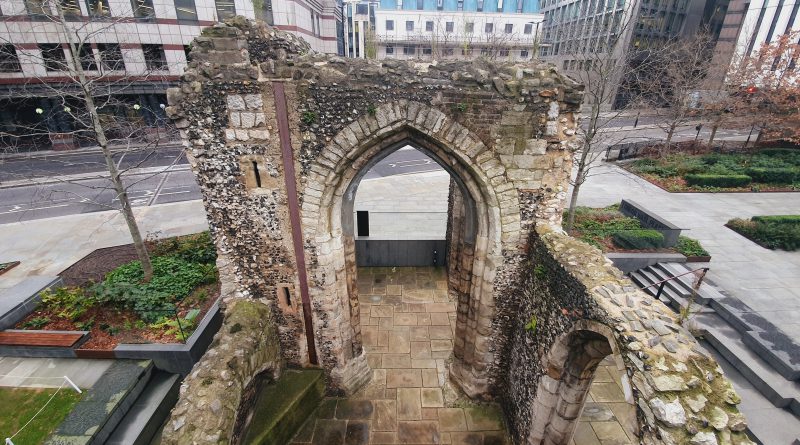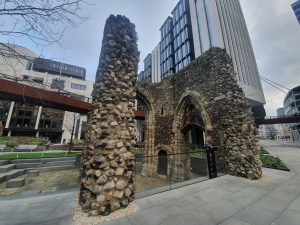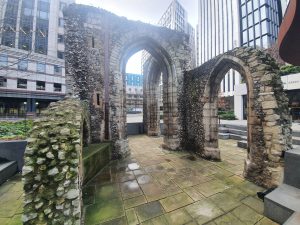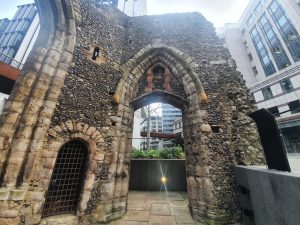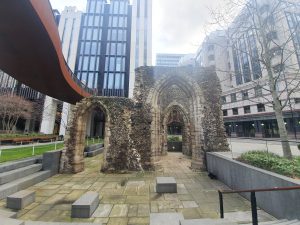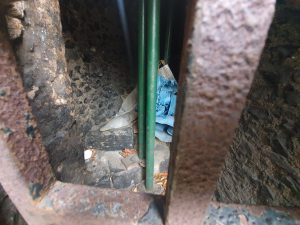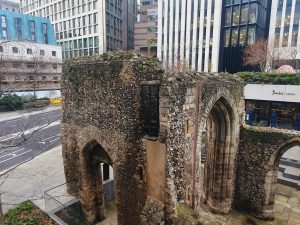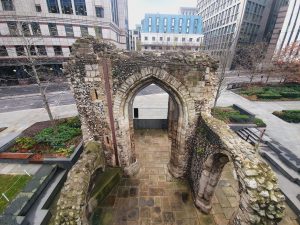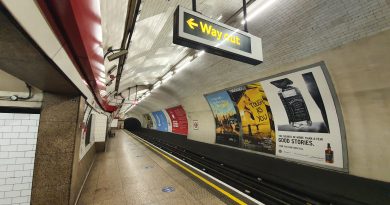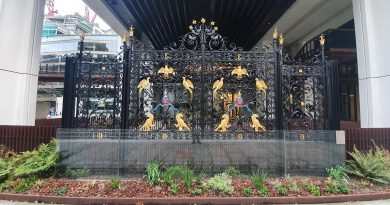London – Central London – Tower of St Elsyng Spital
Located on London Wall, the road named after the Roman defensive wall, this is all that remains of St Elsyng Spital church. It was part of the structures built by William Elsyng, a wealthy London merchant, as a hospital in 1330 to help the poorest members of society in medieval London.
Clicking on this image will make it larger and it’s the site in around 1900 and next to it, what there is today. Reconstruction following the Second World War saw much of this area swept away, but the remains of the church were kept. The landscape has changed substantially though, London Wall now ploughs through this part of London and the area has been opened up to the public. The little cursor on the map on the left is where the remains of the tower stand today.
Through the central arch would have been the main part of the church, the choir and then the nave.
The hospital section of the site was the first to be constructed, with the priory church being completed in 1340. This was later turned into a parish church in 1536, following the Dissolution of the Monasteries. Much of the rest of the site was damaged in 1541 and some of the buildings were turned into a private house, which all became part of Sion College in 1630. There was substantial damage caused by the Great Fire in 1666, but the College remained here until 1886 when they moved to a new site in Victoria.
The cloisters and cemetery would have been off to the right, under what is now London Wall road. The church was damaged in a First World War air raid and part of it was reconstructed in 1919, but the nave was removed in 1923. This wasn’t an entirely destructive process in terms of the history, as the nave of the building only dated to between 1774 and 1777 when it was rebuilt as the old church was falling down, but they did keep the original tower. Following the demolition, the tower and porch were turned into a small church of its own, but this was in turn damaged during an air raid during the Second World War, with the area being comprehensively redesigned.
The stone steps into the tower remain, although are gated off. The steps aren’t easily visible due to the assorted litter that has collected up here.
There’s now a walkway to get a better view of the church and in the centre is where the stone steps come out.
The remains of the church in their new post-war surroundings in what is a decent public space, with numerous interpretation boards explaining the history of the site. Although the medieval street plan has been lost here, the tower is now more visible than it would have been in previous centuries since all of the buildings around it have been removed. I’m sure that there have been many times in the past when planners thought that it would just be easier to remove this section, but it’s now an important part of the local landscape.

